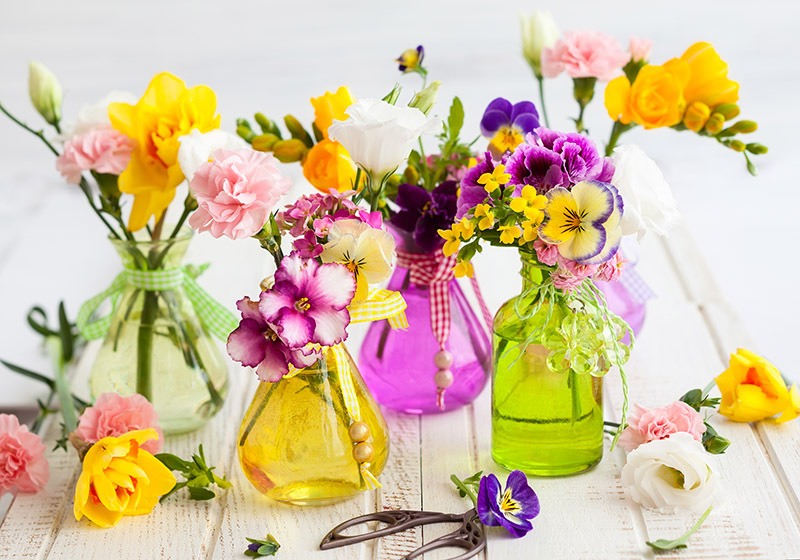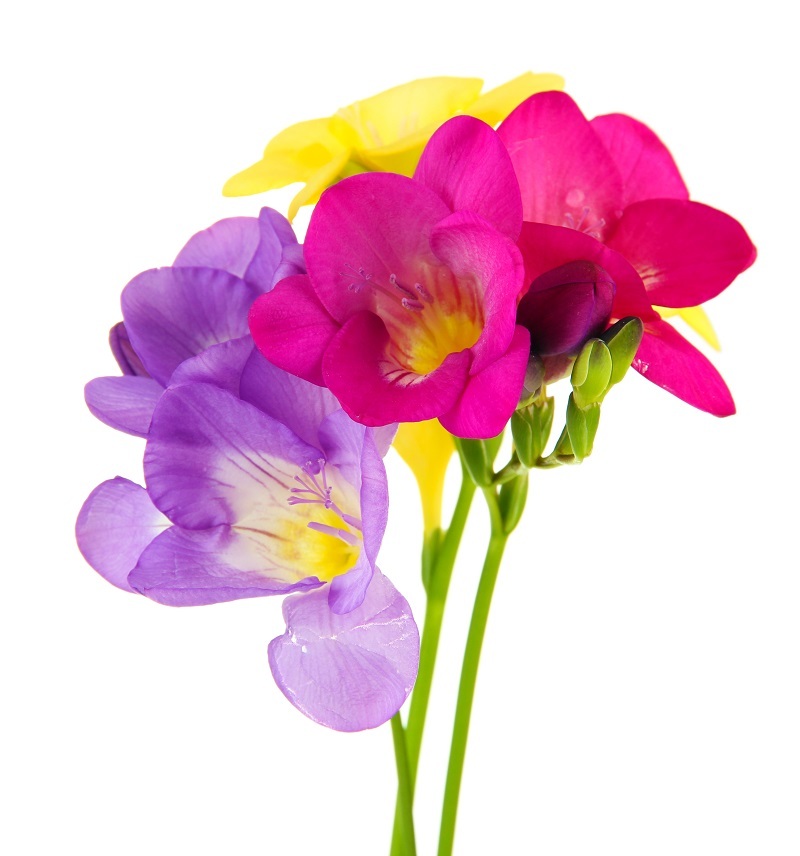Perfect Hydrangea Care: From Root to Bloom
Posted on 18/08/2025
Perfect Hydrangea Care: From Root to Bloom
Hydrangeas are more than just showstoppers in the garden--they are gardeners' favorites for their incredible diversity, lush blooms, and vibrant colors. Achieving the perfect hydrangea, however, requires a comprehensive approach that considers every stage from root development to beautiful, lasting blooms. If you're looking to master hydrangea care, this guide is for you. Below, we detail everything you need to know to cultivate healthy, thriving hydrangeas that are the envy of your neighborhood.
Table of Contents
- Understanding Hydrangea Types
- Hydrangea Planting: Setting The Stage
- Soil Preparation and Amendments
- Watering Techniques for Healthy Roots
- Fertilizer and Nutrition Tips
- Pruning for Vigorous Blooms
- Common Hydrangea Problems and Solutions
- Changing Hydrangea Flower Color
- Seasonal Hydrangea Care Tips
- Landscaping with Hydrangeas
- Conclusion
Understanding Hydrangea Types
Before diving into the details of caring for your hydrangeas, it's essential to recognize the type you're growing. Different varieties require different care approaches, especially when it comes to pruning and site selection.
- Hydrangea macrophylla (Bigleaf, Mophead): Known for their bold, round flower clusters and the ability to change color based on soil pH.
- Hydrangea paniculata (Panicle Hydrangea): Features cone-shaped blooms and exceptional cold tolerance.
- Hydrangea arborescens (Smooth Hydrangea): Includes classics like 'Annabelle'; produces large, white clusters even in shadier spots.
- Hydrangea quercifolia (Oakleaf Hydrangea): Distinctive, oak-shaped foliage and white-to-pinkish flower spikes.
- Hydrangea serrata (Mountain Hydrangea): Smaller, lace-cap blossoms; also capable of color shift.
Knowing your variety ensures tailored care, leading to optimal root development and bloom performance.
Hydrangea Planting: Setting The Stage
Location is paramount! Hydrangeas thrive best in spots where they receive either morning sunlight or dappled afternoon shade. Avoid planting your hydrangea in direct, hot sunlight all day--this could scorch the leaves and stunt bloom production.
- Space plants 3-10 feet apart depending on variety, to ensure air circulation and healthy growth.
- Plant in early spring or autumn for minimal transplant shock.
- Soak the root ball thoroughly before planting to encourage strong root establishment.
Tip: When removing hydrangeas from containers, gently loosen the roots to prevent circling and encourage outward growth.
Soil Preparation and Amendments
Perfect hydrangea roots need perfect soil. Well-draining, fertile soil is the foundation for robust root systems and dazzling blooms. Here's how to prepare the best possible home for your hydrangea:
Testing & Adjusting Soil pH
- Hydrangeas prefer slightly acidic to neutral soil (pH 5.5-7.0).
- For blue flowers, aim for more acidic soil (pH 5.2-5.5). For pink blooms, raise pH closer to neutral (6.0-6.2).
- Conduct a soil test before planting and amend accordingly with garden lime (to raise pH) or elemental sulfur (to lower pH).
Enriching Your Soil
- Mix in plenty of organic matter--compost, well-rotted manure, or leaf mold--to enhance moisture retention and drainage.
- Avoid heavy clay or sand-only soils; amend as needed to achieve a loose, rich texture.
Remember: Consistent, even moisture is key, but standing water is a hydrangea's enemy.
Watering Techniques for Healthy Roots
Hydrangeas are thirsty plants--especially in their first year. Proper watering is crucial for ensuring strong root growth, lush foliage, and vibrant blooms. Here's how to water your hydrangea perfectly:
- Water deeply and infrequently instead of shallow, daily watering. Deep watering encourages roots to grow downward.
- Check soil moisture regularly; soil should feel moist but not soggy.
- Use a mulch layer (2-3 inches) to retain soil moisture and regulate temperature.
- Morning watering is best, reducing evaporation and fungal disease risks.
Insider tip: Hydrangeas wilt as a self-protective mechanism on hot days--even if the soil is moist. If leaves revive in the evening, your watering schedule is just right!
Fertilizer and Nutrition Tips
Providing balanced nutrition helps hydrangeas both below the ground and above. The key is the right type, timing, and quantity.
Best Fertilizer for Hydrangeas
- Use a balanced, slow-release fertilizer (e.g., 10-10-10 or 14-14-14) in early spring.
- Supplement with compost or fish emulsion for an organic boost.
- For reblooming varieties, a light second feeding in late spring can encourage more blooms.
Avoid over-fertilizing! Excess nitrogen leads to leafy growth at the expense of blooms. For most hydrangeas, less is more when feeding.
Pruning for Vigorous Blooms
Pruning hydrangeas can seem intimidating, but the right timing and method ensures abundant flowering and healthy structure.
When and How to Prune Different Hydrangea Types
- Bigleaf and Mountain Hydrangeas (H. macrophylla, H. serrata): Bloom on old wood. Prune immediately after flowering (late summer). Remove weak or damaged stems.
- Panicle and Smooth Hydrangeas (H. paniculata, H. arborescens): Bloom on new wood. Prune in late winter or early spring before new growth emerges. Cut back stems by one-third for larger blooms.
- Oakleaf Hydrangeas: Light pruning needed; remove only dead wood or spent blooms after flowering.
Always sterilize your pruners before and after use to prevent disease transmission.
Common Hydrangea Problems and Solutions
Even with the best care, hydrangeas can face a few challenges. Here's how to spot and remedy the most common issues:
- Wilting or yellow leaves: Likely over- or under-watering. Check soil drainage and adjust frequency.
- Brown leaf tips: Often caused by sunburn or fertilizer burn. Move to a shadier spot or reduce feeding.
- Few or no blooms: Pruning at the wrong time, insufficient sunlight, or excess nitrogen can reduce flowering.
- Pests (aphids, spider mites): Hose off with water or apply neem oil soaps.
- Diseases (powdery mildew, leaf spot): Improve air circulation and treat with fungicides if necessary.
Changing Hydrangea Flower Color
One of the most fascinating features of hydrangeas--especially Bigleaf hydrangeas--is the ability to change the flower color through soil chemistry.
- Blue Blooms: Increase soil acidity by adding aluminum sulfate or organic matter like pine needles.
- Pink Blooms: Raise soil pH with garden lime. Avoid sources of aluminum in the soil.
Color changes are gradual and may take up to a season to fully manifest.
Seasonal Hydrangea Care Tips
Proper seasonal hydrangea care ensures vibrant growth and protects plants year-round.
Spring
- Apply a slow-release fertilizer as new shoots appear.
- Remove winter mulch and check for damaged stems.
Summer
- Maintain consistent watering; hydrate during dry spells.
- Deadhead spent blooms to encourage more flowers (not necessary on all varieties).
Autumn
- Rake fallen leaves; add a light mulch layer before frost.
- Hold off on fertilizing to enable woody growth for winter.
Winter
- For marginal climates, wrap plants with burlap or mulch over the crown for cold protection.
- Resist pruning until spring to protect flower buds from harsh weather.
Landscaping with Hydrangeas
Hydrangeas are versatile plants that can be used as specimens, hedges, borders, or focal points in your landscape design.
- Combine with shade perennials like hosta or ferns for a textured, woodland look.
- Interplant with evergreens for year-long interest and structural contrast.
- Use panicle or oakleaf types at the back of beds for dramatic height and late-season color.
- Pot hydrangeas on patios for moveable bursts of color and fragrance.
Hydrangeas are deer-resistant and pollinator-friendly, making them ideal for eco-conscious gardens.
Tip: Plant a mix of varieties for a continually evolving display from spring through fall.
Conclusion: Nourish, Nurture, and Enjoy Your Hydrangeas
Achieving the perfect hydrangea from root to bloom is a journey of observation, patience, and care. By selecting the right variety, preparing your soil, perfecting your watering and feeding regimen, and responding mindfully to your plant's needs, you can enjoy a thriving garden filled with spectacular hydrangea flowers season after season. Remember: every garden is unique--experiment with techniques to discover what works best in your landscape.
Now, step out into your garden, nurture your hydrangeas, and watch your efforts blossom beautifully! For more detailed guides on caring for your favorite plants, bookmark us and check back often.


Latest Posts
The Mood Magic of Plants: Enhancing Life Through Flowers
Ways to Keep Your Poinsettias Lush and Alive
7 Things You Never Knew About Tulips That Will Surprise You





